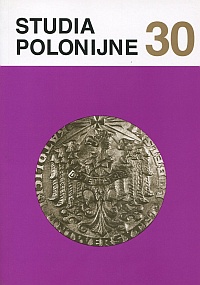Providing pastoral care for Poles in Norway
Main Article Content
Abstract
Until the 1980s pastoral work done by Polish priests in Norway was reduced to performing pastoral duties for the benefit of Catholics living there; and the priests did not form pastorate for Polish emigrants. The number of Poles in Norway was no greater than 1000 people before 1980.
The first Polish priest who worked in Norway was Marceli Świetlik; a few years later Father Piotr Bzdyl started to carry out pastoral duties. In 1935 the number of Poles in Oslo was estimated at about 40 people – they were mainly convent sisters (Sisters of Saint Elizabeth and Josephites), a few traders and factory workers. The Polish emigration and the Polish community were formed during the Second World War. Germans sent to Norway about 2500 prisoners of war taken during the September 1939 campaign and several thousand forced workers (Organisation Todt). According to various estimations after the end of the war in Norway there were about 17-22.000 Poles; but at the end of 1946 only 1280 remained there. After the Second World War Rev. Alfons Wysiecki and Rev. Juliusz Pustelnik, and then also Rev. Leon Trawicki and Rev. Józef Pruszyński joined the activities aimed at providing the Poles with pastoral care.
Most often Poles participated in the Norwegian pastorate, and the local parish priests – in order to give them an opportunity to make a confession in their native language – brought aPolish priest twice a year (before Christmas and before Easter). In 1954 Rev. L. Trawicki obtained Bishop Jacob Mangers' approval of forming a Polish pastorate in Oslo (it included Sunday Holy Masses and Friday rosary services).
In 1980 Father Teodor Famuła (OMI) came from Sweden and started work at the Halden parish, and next year he was joined by Father Wiesław Kowal OMI. Starting from that year in Oslo (on the first Sundays in a given month) the Holy Mass was regularly said in Polish; first in Saint Joseph’s Chapel, and then in Saint Olav’s Cathedral.
The pastoral care over Poles was better organized from the moment monastic priests of the congregations of the Sacred Hearts of Jesus and Mary, Oblates – OMI and Missionaries of the Holy Family – MSF came to Norway; Rev. Józef Kozłowski was an exception to this rule. In 1989 in Norway eleven Polish priests worked: seven ones in the Oslo diocese and four ones in Tromsø.
In 1989, with the moment when several dozen thousand Poles arrived to Norway, and especially to Oslo (especially in the summer) Holy Masses in Polish were said every Sunday. Saying the rosary for Poland was initiated on the first Saturday of each month; retreats (in Advent and in Lent), walking pilgrimages to Mariaholm (34 km from Oslo) and catechization of children and youths were organized.
From 1987 „Kronika” was edited and published – a monthly for Polish emigrants that was circulated all over Norway (until 2003). From 1988 the John Paul II Polish Saturday School has been working. During the lessons children are prepared for the First Holy Communion.
In 1992 Franciscans – OFM, and in 2003 Cistercians – OCSO assumed the pastoral duties.
In the middle of 2006 the number of Poles living in Norway was estimated at 70.000. Assuming that more than 90% of them were Catholics we would find that Catholics of Polish origin constituted more than a half of all the Catholics in that country. On 30 November 2007 the Coordinator of the Polish Pastorate in the Oslo diocese was appointed. Poles may regularly avail themselves of pastoral care in the Polish language in the capital of the country and in some parishes where the duties of the parish priest or of the curate are carried out by a Polish priest. In the other parishes on the average once a month the Holy Mass is said in Polish. The number of Poles, and hence of Catholics, increases every year. In 2009 the number of Polish citizens staying in Norway exceeded 140 000.

